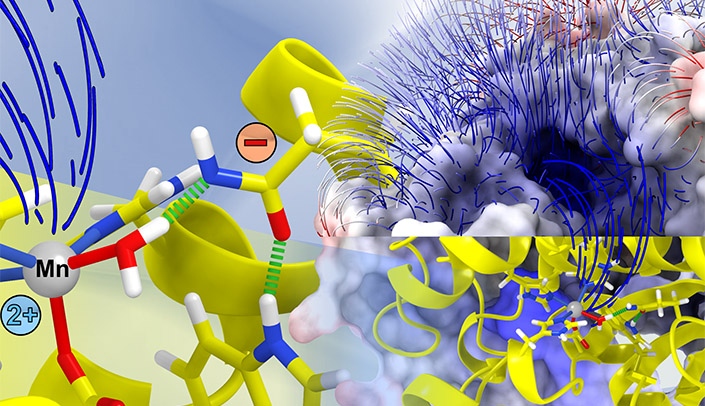The lab of Eppley Institute professor Gloria Borgstahl, PhD, along with scientists at Oak Ridge National Laboratory (ORNL), has published a landmark discovery on how a mitochondrial enzyme rapidly protects people from oxidative damage — the type of damage that is responsible for all aspects of aging and disease.
The paper recently was published in Nature Communications.
The enzyme, manganese superoxide dismutase (MnSOD), uses concerted proton and electron transfers, or CPETs, for the destruction of superoxide. CPETs are a type of chemical reaction used by more than a quarter of human enzymes. The transfer of protons and electrons are key to biological life and are involved in processes like generating cellular energy and protecting cells from DNA damage.
CPETs have been notoriously difficult to study, Dr. Borgstahl said. “Studying CPETs requires instruments that can visualize protons in 3D while we control the electrons. Only recently has the technology been developed.”
At ORNL, a cutting-edge instrument called the macromolecular neutron diffractometer (MaNDi) has recently been commissioned.
“MaNDi is the only instrument in the world that allows us to do this kind of work,” said William Lutz, a researcher in Dr. Borgstahl’s lab.
Dr. Borgstahl’s team first decipher the CPETs of MnSOD.
“MnSOD serves to keep mitochondria, the ‘powerhouse of the cell,’ healthy. Without MnSOD, mitochondria degenerate, and cells are left without a source of energy,” said Jahaun Azadmanesh, a post-doctoral researcher in Dr. Borgstahl’s lab. Many human disorders, such as cancer, are characterized by a lack of healthy mitochondria, he said.
By working with scientists at ORNL, the Borgstahl team planned how to visualize the CPETs of MnSOD with MaNDi.
But there were several challenges.
“Just having the instrument wasn’t enough,” Dr. Borgstahl said. “There were some intimidating hoops we had to jump through.”
For the experiment to work, samples of MnSOD had to have its hydrogen atoms replaced with the deuterium isotope and then be crystallized to large size. “We even went as far as putting MnSOD on the International Space Station to grow bigger crystals,” Dr. Borgstahl said.
Once they had the necessary sample, the team travelled to ORNL to use MaNDi. There, the crystal was placed in front of a neutron beam, and the diffraction pattern was measured. With the pattern, a 3D image of protons alongside other organic atoms was constructed.
“By controlling the state of electrons in the crystal, we could visualize how the protons move when an electron is added or removed,” Lutz said.

Congratulations to Dr. Borgstahl and her team. Great seeing medical discoveries spring forth from Eppley- the sky's the limit. Keep up the good work !!